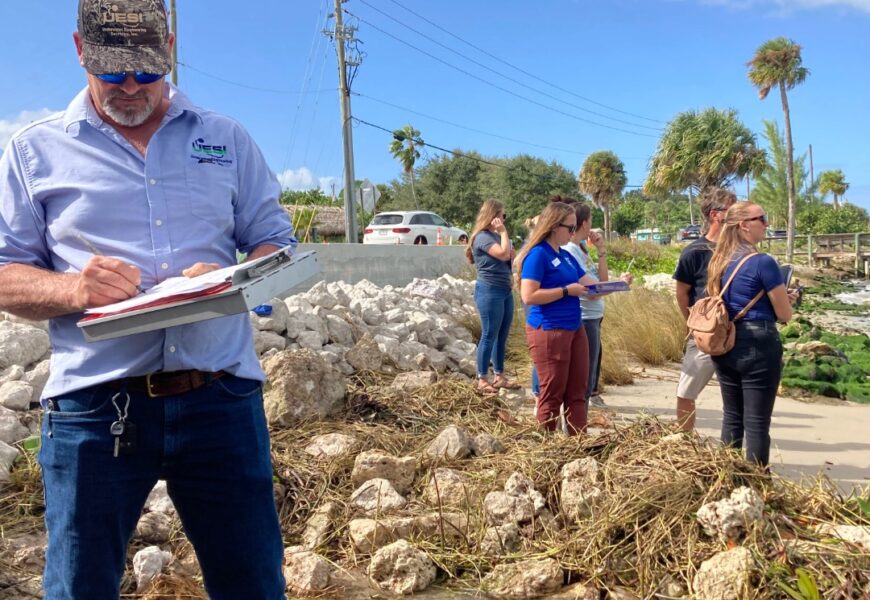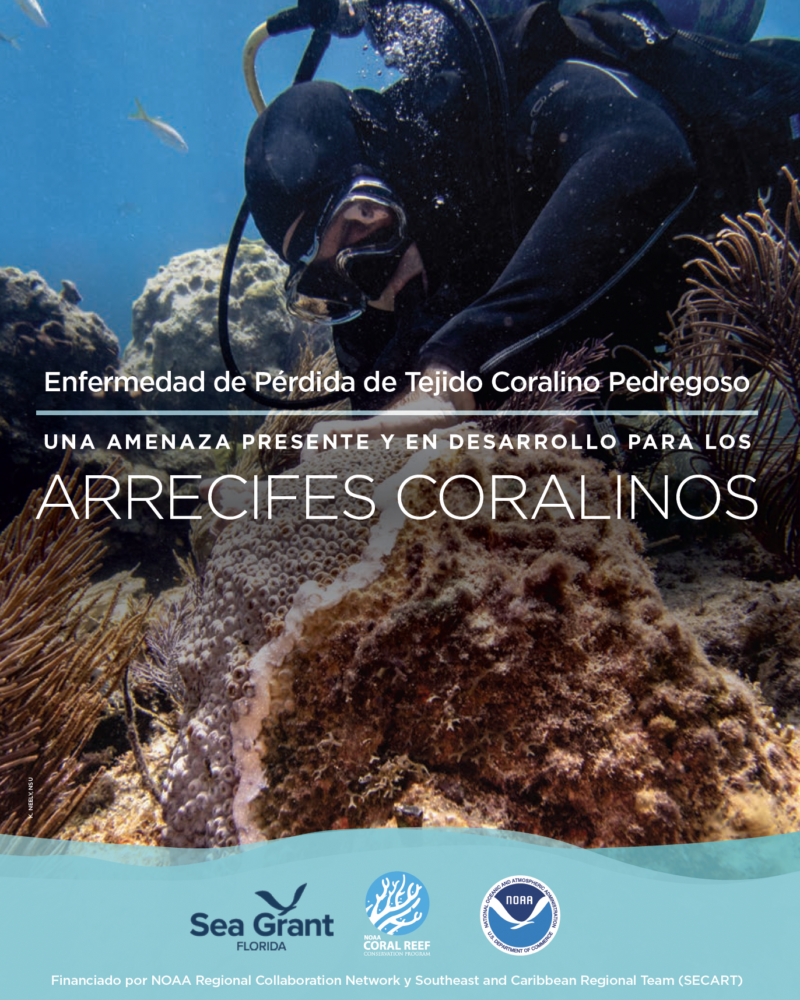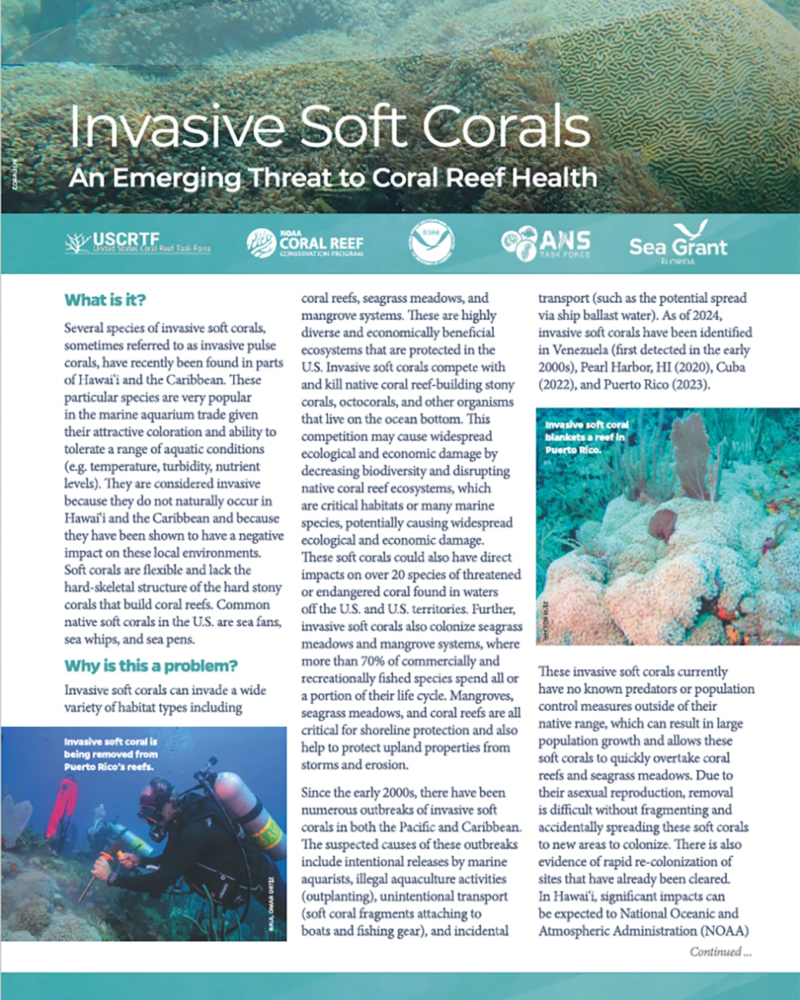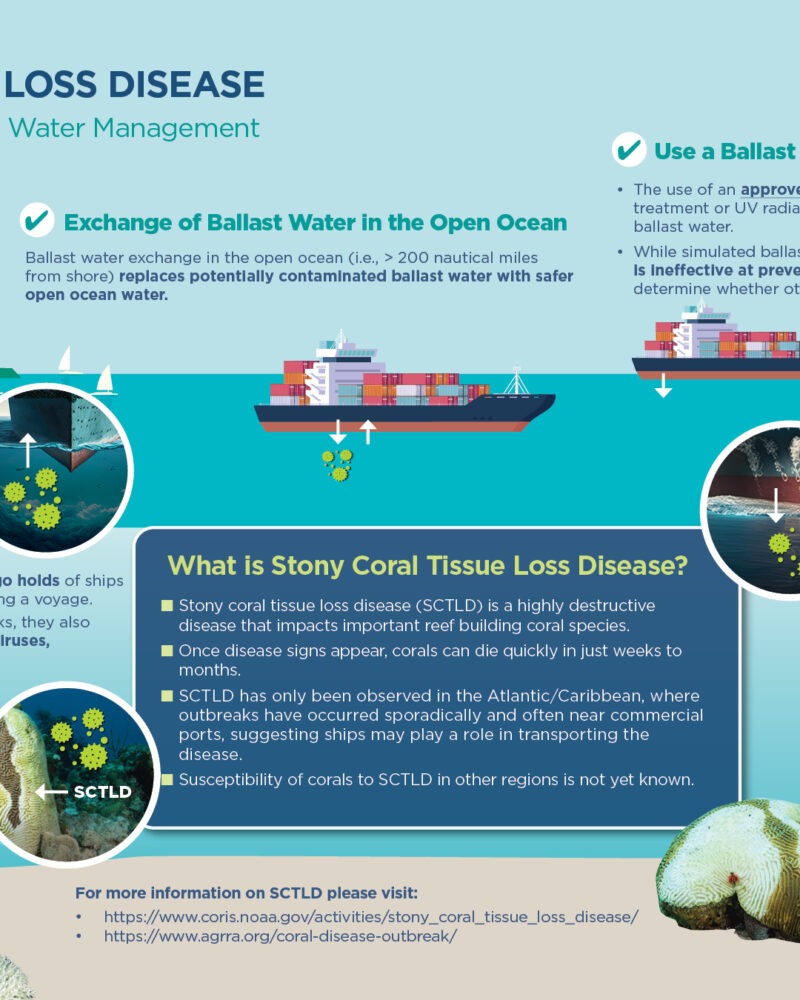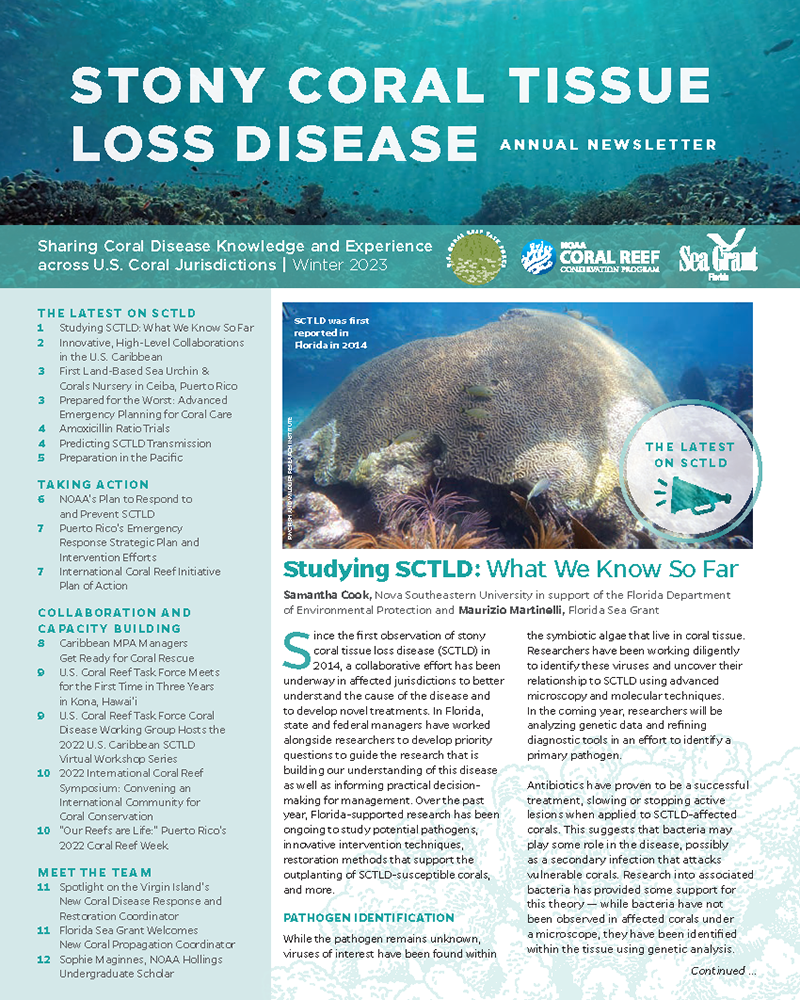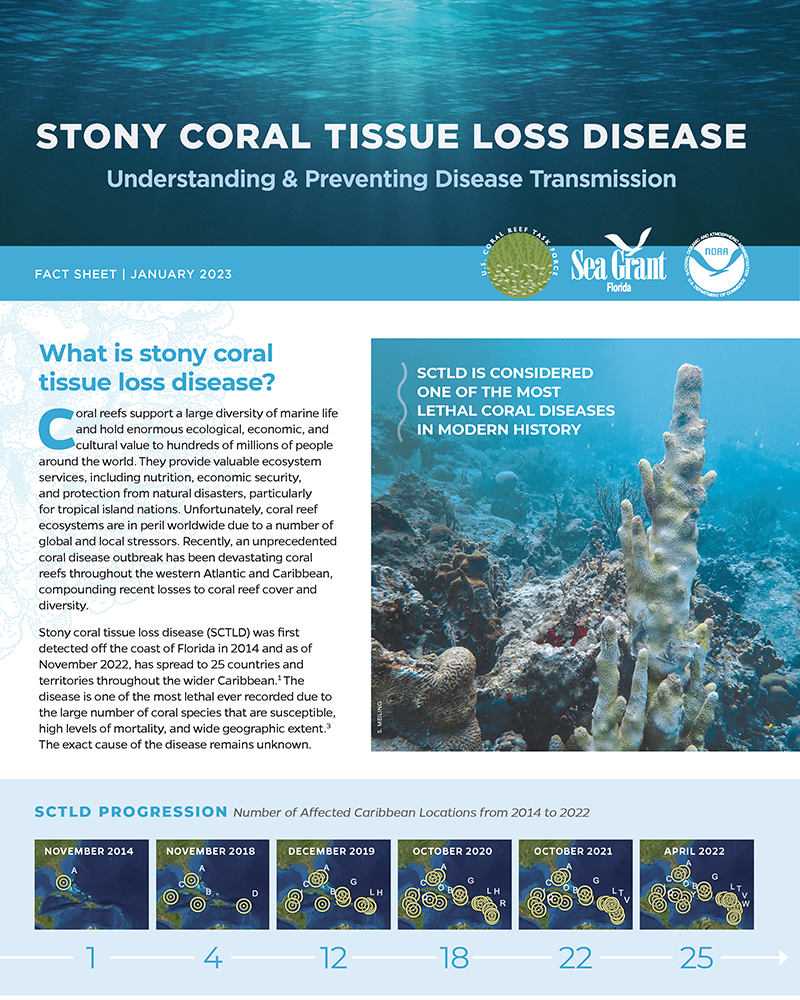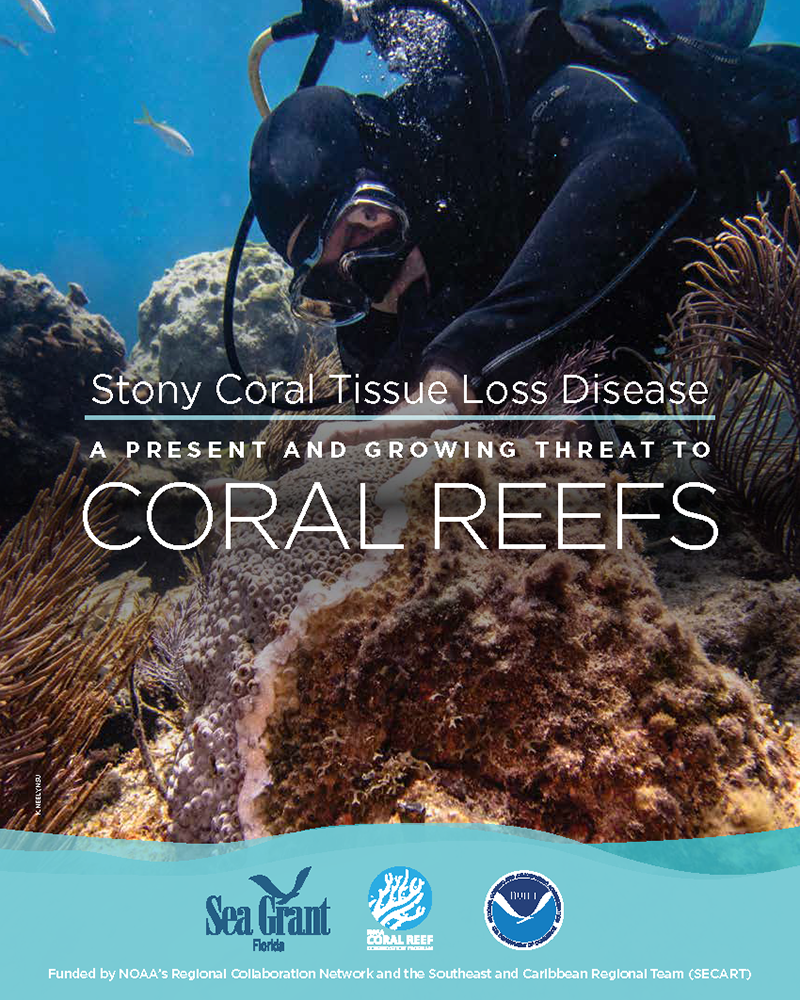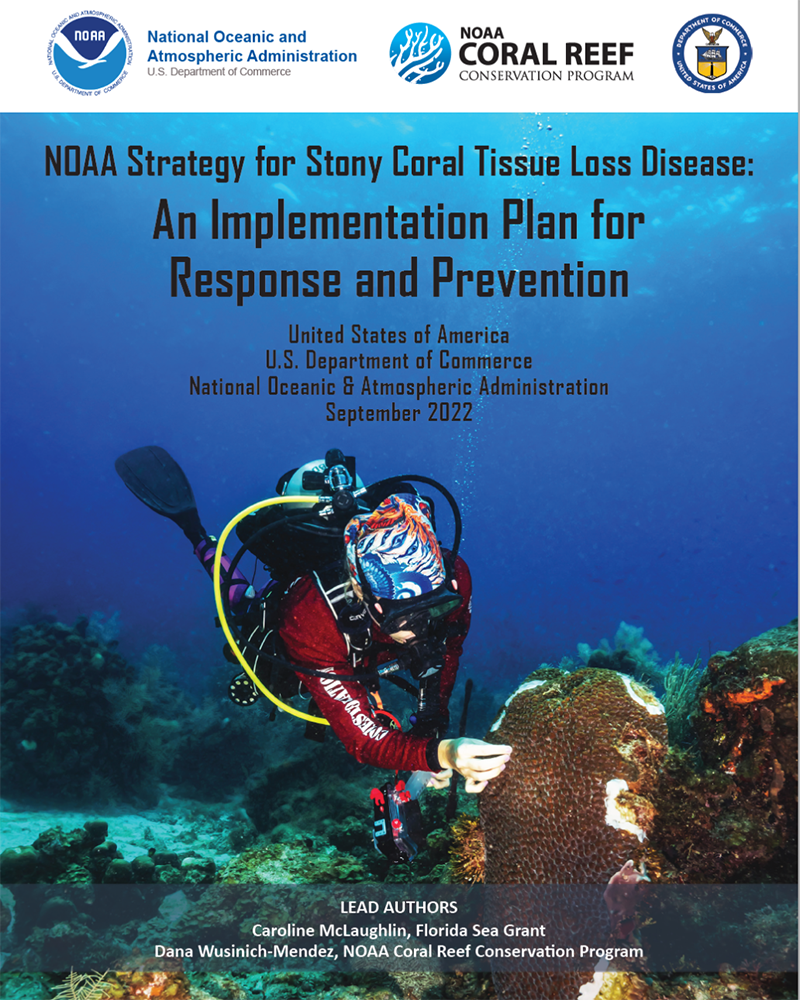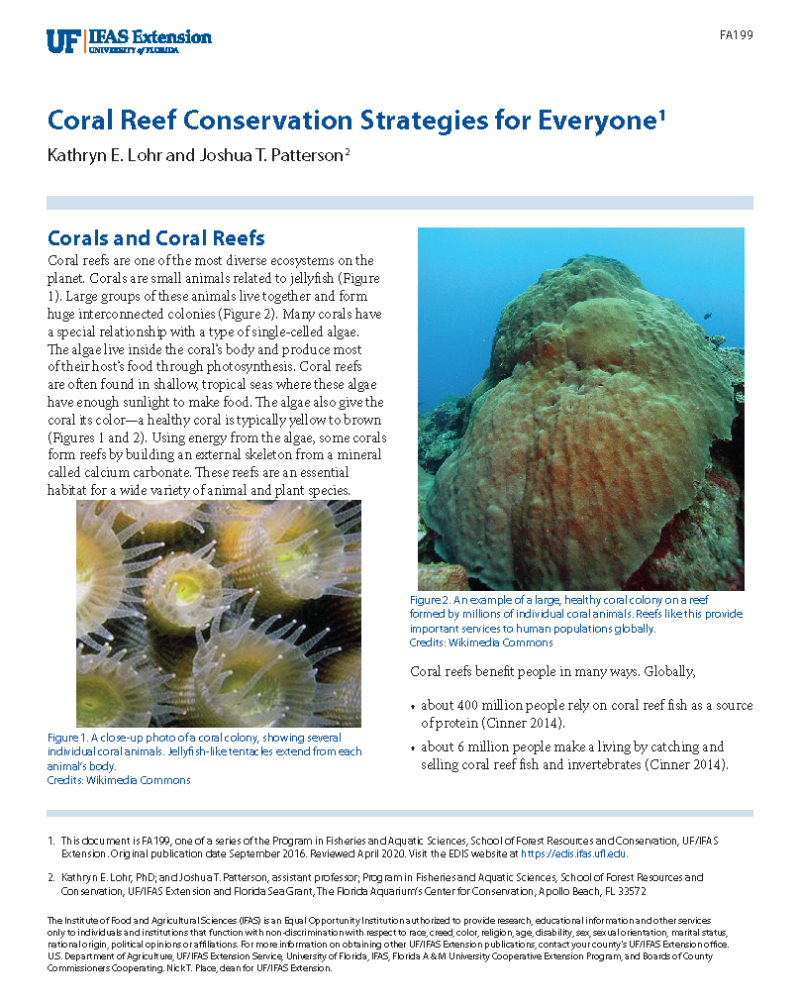Coral Health
Coordinating A Cross-Agency Approach To Coral Health
Florida Sea Grant is helping steer the nation’s and state’s collective response to stony coral tissue loss disease, which has plagued Florida’s 360-mile-long reef tract since 2014.
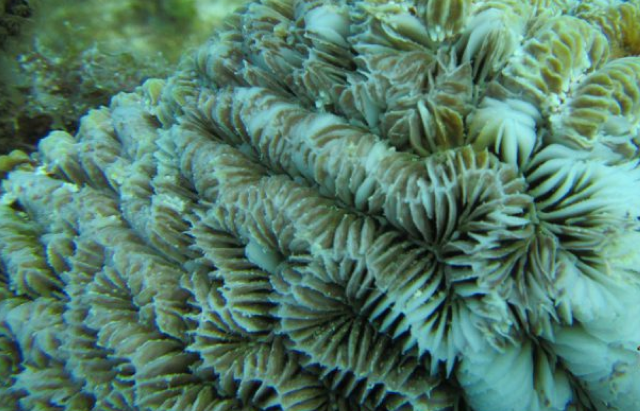
Maze coral with stony coral tissue loss disease. Ben Edmonds
Coral reefs are one of the oldest ecosystems on the planet, first forming over 500 million years ago. Often dubbed “the rainforests of the sea,” coral reefs are an incredibly productive ecosystem that provide critical resources – such as medicine, food, and coastal protection – for millions of people around the world. Coral reefs support a quarter of all marine life by providing shelter for fishes, crustaceans, and other marine animals. The incredible biodiversity found on coral reefs supports economically important tourism, recreation, and commercial fishing industries.
In 2007, coral reefs across the United States generated an estimated $1.04 billion from tourism and commercial fishing industries alone, with a total economic value of $3.1 billion. Healthy reefs also shelter coastlines from waves and flooding, absorbing 97% of wave energy and preventing waves from reaching the shoreline.
Stony Coral Tissue Loss Disease
Unfortunately, coral reefs across the western Atlantic and Caribbean are being devastated by a deadly coral disease referred to as stony coral tissue loss disease (SCTLD). This disease is infectious, highly lethal, and spreads rapidly. First detected off Miami’s coast in 2014, the disease affects many important reef-building stony coral species and has high rates of mortality. Indeed, once corals begin to lose living tissue, many will die within weeks to months without active intervention and treatment. Experts believe this may be the most lethal coral disease ever recorded. Extensive efforts are now underway to treat sick corals, determine the disease’s origins, rescue coral diversity, and restore reefs. Response activities led by scientists, managers, and other stakeholders are underway in the U.S. to protect coral reefs from the long-term impacts of this deadly disease.
Cross-Agency Communications & Coordination
To combat the spread of stony coral tissue loss disease, NOAA and the State of Florida—through the Department of Environmental Protection and the Fish and Wildlife Conservation Commission—have contributed to a suite of control, mitigation and prevention measures. As a result, Florida Sea Grant now hosts five staff coordinators whose work addresses:
- The local, regional, and national preparation and response to the disease threat.
- A propagation strategy that includes genetic diversity goals.
- A land-based infrastructure plan, and logistics related to moving broodstock or gametes.
- The development of coral protection including regional water quality initiatives and standards as they relate to coral reef resources.
- Budget coordination for the Coral Protection and Restoration (CPR) program that includes administration of CPR funding, program and project coordination, and information management.

Florida Fish and Wildlife Research Institute
Coral Health
Programs
& Initiatives
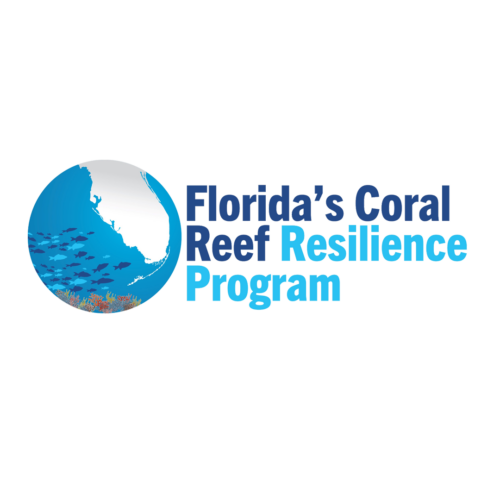
Florida's Coral Reef Resilience Program
The Florida’s Coral Reef Resilience Program (FCRRP), seeks to rapidly respond to emerging disturbances–like SCTLD outbreaks and coral bleaching– while also tackling longer-term conservation needs–like remediating water quality and building climate resilience.
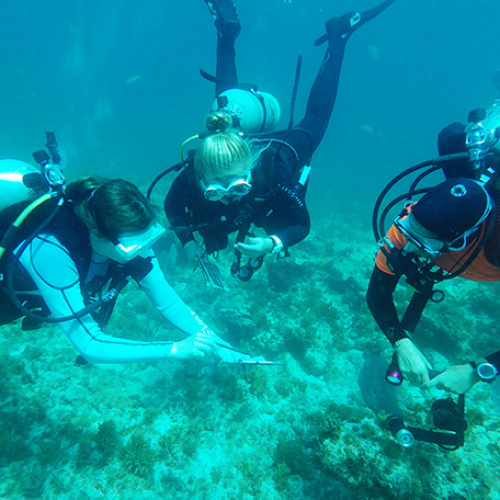
SCTLD Underwater Observer Training
The Stony Coral Tissue Loss Disease Observer Training engages the recreational diving community to increase understanding of the disease outbreak and teach divers how to identify species of stony corals for monitoring. The virtual and in-person training is free and can be paired with an optional, paid, in-water training to enhance learning of organism identification and coral condition.

Featured Coordinator
Maurzio
Martinelli
Florida Coral Disease Response Coordinator,
Florida Sea Grant
Florida’s coral reef management is among the most advanced and comprehensive in the world. I want to ensure that what we learn and accomplish here in Florida can be utilized by folks in other jurisdictions who face similar challenges.
Featured Coordinator
Maurizio Martinelli
Florida Coral Disease Response Coordinator,
Florida Sea Grant
Coral Health
Latest
News
Partners supporting Florida's coral reef
Florida Sea Grant is among many organizations making a difference for Florida’s coral reef. Visit floridascoralreef.org to learn more.
Publications & Resources
Browse and download our science-backed coral health products created by faculty experts.
Faculty Experts
Looking for answers or resources on coral disease? Reach out to our faculty experts listed below.
